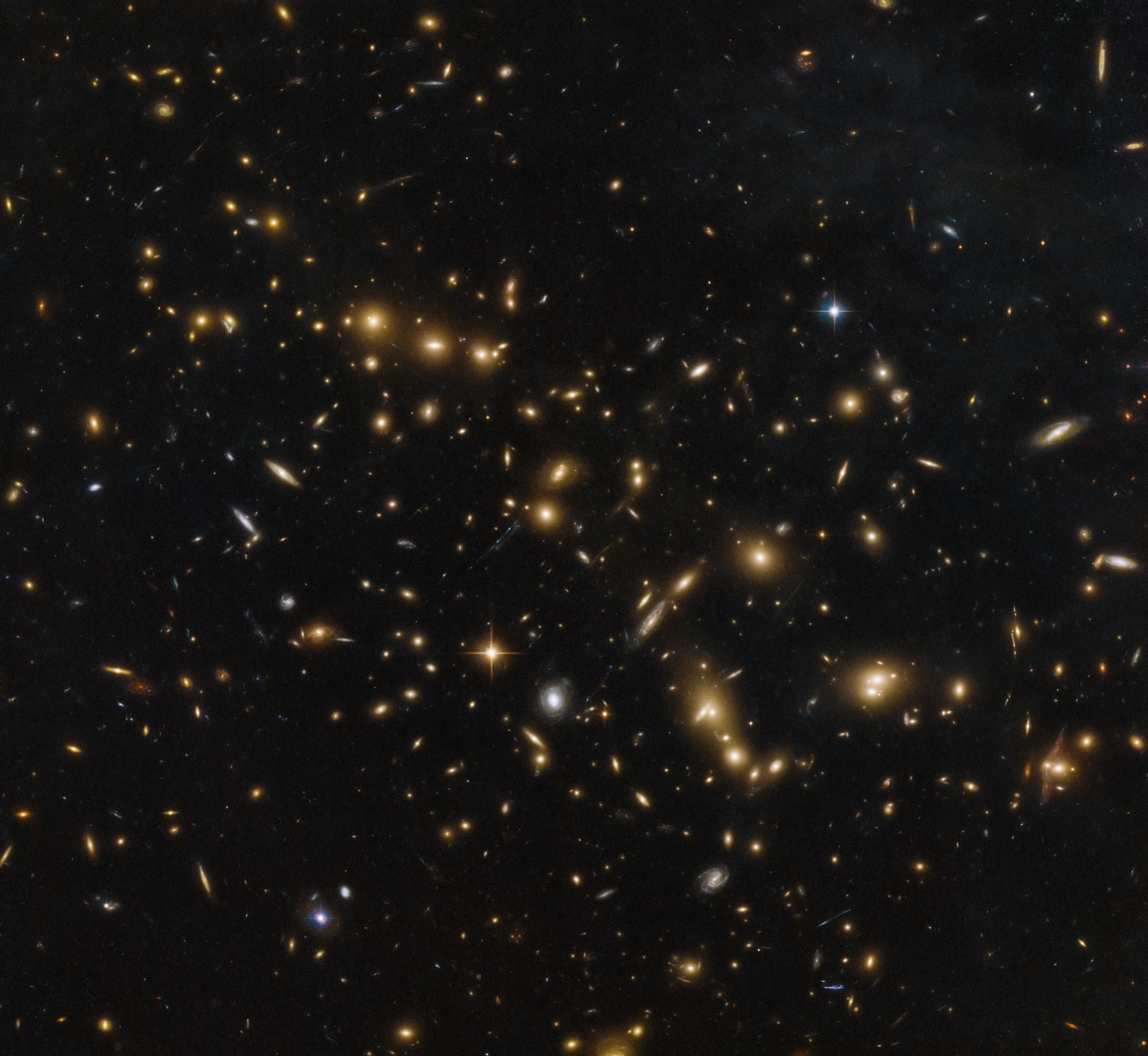1 min read

In the darkness of the distant universe, these galaxies resemble glowing fireflies, flickering candles, charred embers floating up from a bonfire, and light bulbs softly shining. This image, captured by the NASA/ESA Hubble Space Telescope, shows a massive group of galaxies bound together by gravity: a cluster named RXC J0032.1+1808.
This image was taken by Hubble’s Advanced Camera for Surveys and Wide Field Camera 3 as part of an observing program called RELICS (Reionization Lensing Cluster Survey). RELICS imaged 41 massive galaxy clusters with the aim of finding the brightest distant galaxies for the forthcoming James Webb Space Telescope to study.
Expected to launch in 2020, the Webb telescope is designed to see in infrared wavelengths, which is exceedingly useful for observing distant objects. As a result of the expansion of the universe, very distant objects are highly redshifted (their light is shifted toward the redder end of the spectrum), and so infrared telescopes are needed to study them. While Hubble currently has the ability to peer billions of years into the past to see “toddler” galaxies, the Webb telescope will have the capability to study “baby” galaxies, the first galaxies that formed in the universe.
Text: European Space Agency







